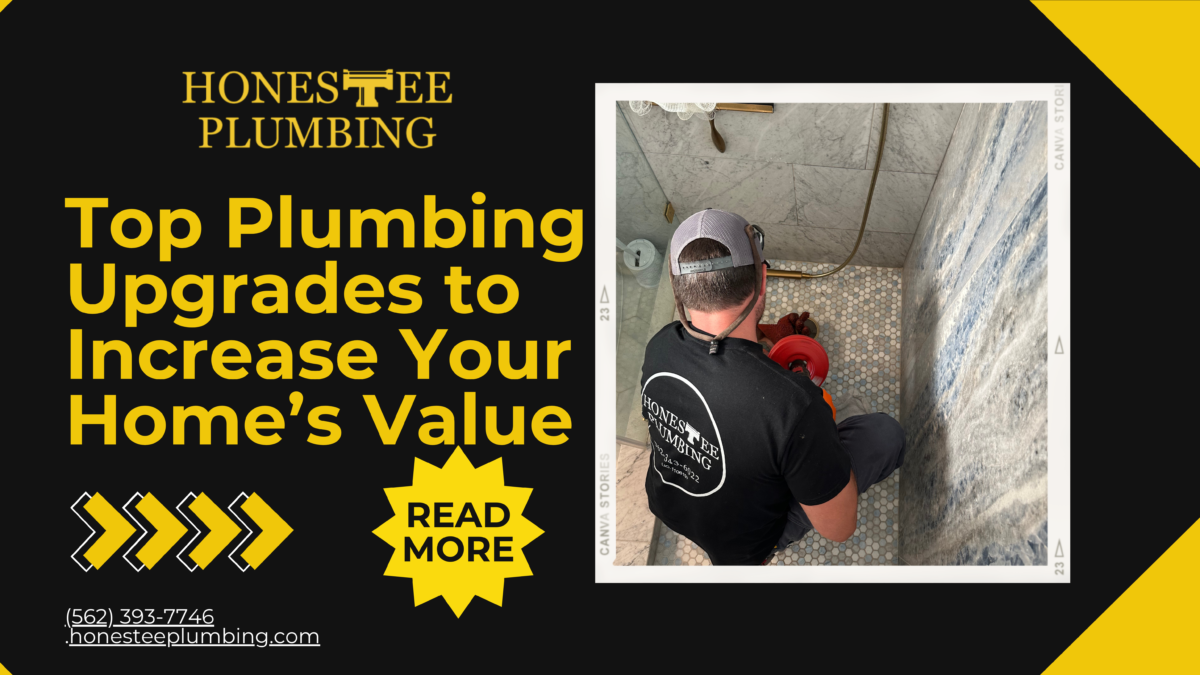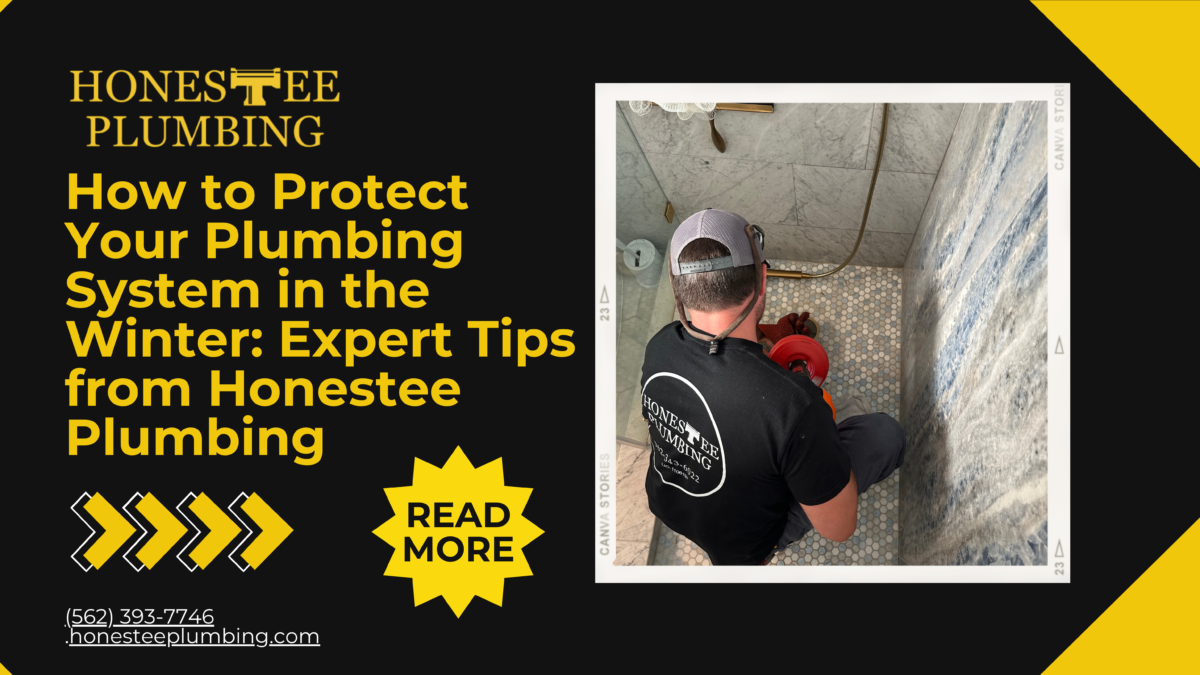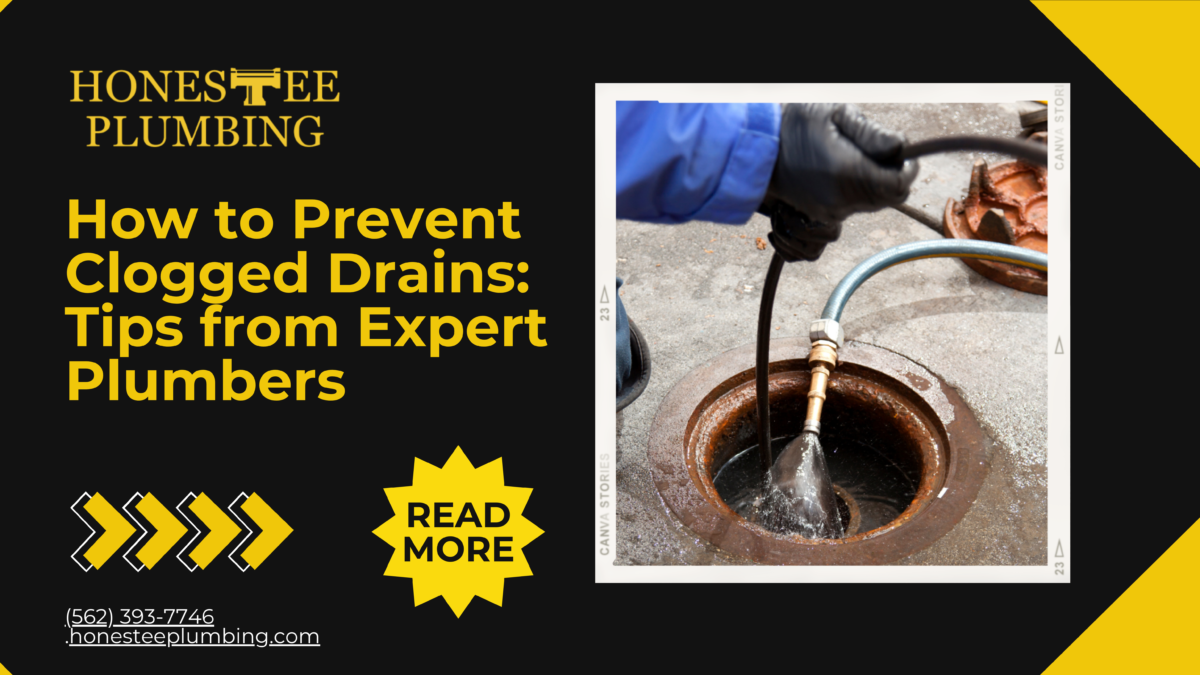When it comes to increasing your home’s value, many homeowners focus on renovations like new flooring, kitchen updates, or exterior landscaping. However, one of the most effective (and often overlooked) ways to boost your home’s market value is by upgrading its plumbing system. Modern plumbing upgrades not only enhance the functionality and efficiency of your home but also attract potential buyers who are looking for a property with long-term reliability.
At Honestee Plumbing, we’ve helped countless homeowners improve their plumbing systems, and we’ve seen firsthand how these upgrades can add significant value to homes. Below are some of the top plumbing upgrades that can enhance both your home’s comfort and its resale value.
1. Install Low-Flow Fixtures
Water conservation is becoming increasingly important to homeowners, making low-flow fixtures a great investment. These fixtures are designed to reduce water consumption without sacrificing performance. Upgrading to low-flow faucets, showerheads, and toilets can significantly lower your water bills and reduce your home’s environmental impact. Not only will this make your home more attractive to eco-conscious buyers, but it will also provide long-term savings for you while you live in the home.
- Low-flow toilets can save up to 4,000 gallons of water per year.
- Low-flow showerheads maintain water pressure while using less water, making showers more efficient.
2. Upgrade to a Tankless Water Heater
A traditional water heater with a large tank takes up space and constantly heats water, which can waste energy. Tankless water heaters, on the other hand, heat water on demand, providing endless hot water while using less energy. This upgrade is particularly appealing to potential buyers because it promises both comfort and energy savings.
A tankless water heater also has a longer lifespan compared to conventional models, which adds to its appeal as a valuable upgrade.
- Saves space which doesn’t require a large storage tank.
- Reduces energy costs, since water is heated only when needed.
- Provides continuous hot water for larger families or frequent use.
3. Repiping with Modern Materials
Older homes often have outdated piping materials like galvanized steel or lead pipes, which can deteriorate over time and affect water quality. Repiping your home with modern materials like copper or PEX (cross-linked polyethylene) not only improves water flow and pressure but also ensures the longevity of your plumbing system.
Repiping your home can be a big investment, but it’s one that can pay off in the long run by increasing your home’s market value and ensuring future buyers that they won’t have to deal with plumbing issues for decades.
- Copper piping is durable and has been the standard for many years.
- PEX piping is flexible, resistant to scale, and often more affordable than copper.
4. Smart Plumbing Technology
With smart home technology becoming increasingly popular, upgrading your plumbing system to include smart features can set your home apart from others on the market. Smart plumbing devices offer convenience, energy savings, and peace of mind, which makes them a great investment for any homeowner.
- Smart water leak detectors: These devices can detect leaks early and send alerts to your smartphone, helping prevent costly water damage.
- Smart water heaters: You can control the temperature and schedule heating times from an app, optimizing energy use.
- Touchless faucets: These reduce water waste and add a modern touch to your kitchen or bathroom.
5. Install a Water Filtration System
Homebuyers are increasingly concerned about the quality of their drinking water. Installing a whole-house water filtration system can provide peace of mind by ensuring that the water throughout the home is clean, safe, and free from contaminants. This can be a valuable selling point, especially in areas where water quality is a concern.
A water filtration system can remove chlorine, lead, and other harmful substances, improving both the taste and safety of your water. It also reduces wear and tear on plumbing fixtures and appliances, potentially extending their lifespan.
6. Add a Garbage Disposal
If your kitchen doesn’t already have a garbage disposal, this is a small but impactful upgrade that many potential homebuyers appreciate. A garbage disposal makes it easier to manage kitchen waste and can help prevent clogs in your pipes. It’s a convenient addition that adds value by improving the overall functionality of the kitchen.
7. Update Your Bathroom with Modern Fixtures
Updating your bathroom with modern, high-quality plumbing fixtures is an excellent way to increase your home’s value. Features like dual-flush toilets, stylish faucets, and luxurious showerheads can make a big difference in both the aesthetics and functionality of the space.
Consider upgrading your bathroom with:
- Rainfall showerheads for a spa-like experience.
- Freestanding bathtubs for a luxurious focal point.
- Modern vanities with built-in storage and sleek designs.
Frequently Asked Questions (FAQs)
1. Will upgrading my plumbing really increase my home’s value?
Yes! Plumbing upgrades not only improve the functionality of your home but also appeal to potential buyers looking for energy efficiency, water conservation, and modern conveniences. Many homebuyers see value in homes with updated plumbing, since it reduces the risk of future repairs and replacements.
2. How much can I save with low-flow plumbing fixtures?
Low-flow fixtures can save you a significant amount on your water bills. For example, a low-flow toilet can save about 1.28 gallons per flush, which adds up to thousands of gallons per year. Similarly, low-flow showerheads use less water while maintaining strong water pressure, leading to noticeable savings.
3. Are tankless water heaters worth the investment?
While tankless water heaters typically cost more upfront, they can save you money in the long run by reducing energy consumption. They provide endless hot water on demand and take up less space than traditional water heaters, making them an appealing feature for homebuyers.
4. How do smart plumbing devices work?
Smart plumbing devices connect to your home’s Wi-Fi network and can be controlled or monitored via a smartphone app. They offer features like remote leak detection, temperature control, and water usage monitoring, giving homeowners more control over their plumbing system.
5. Is repiping my home necessary?
If your home has outdated or corroding pipes, repiping is a valuable investment. It not only improves water quality and pressure but also increases your home’s appeal to potential buyers, who will appreciate knowing the plumbing system is modern and reliable.
Increase Your Home’s Value with Smart Plumbing Upgrades
Upgrading your home’s plumbing system is an excellent way to increase its market value, improve efficiency, and provide peace of mind to potential buyers. Whether it’s installing low-flow fixtures, upgrading to a tankless water heater, or incorporating smart plumbing technology, these improvements offer both immediate benefits and long-term value. If you’re considering plumbing upgrades, contact Honestee Plumbing. We specialize in helping homeowners make smart, value-boosting plumbing decisions.





